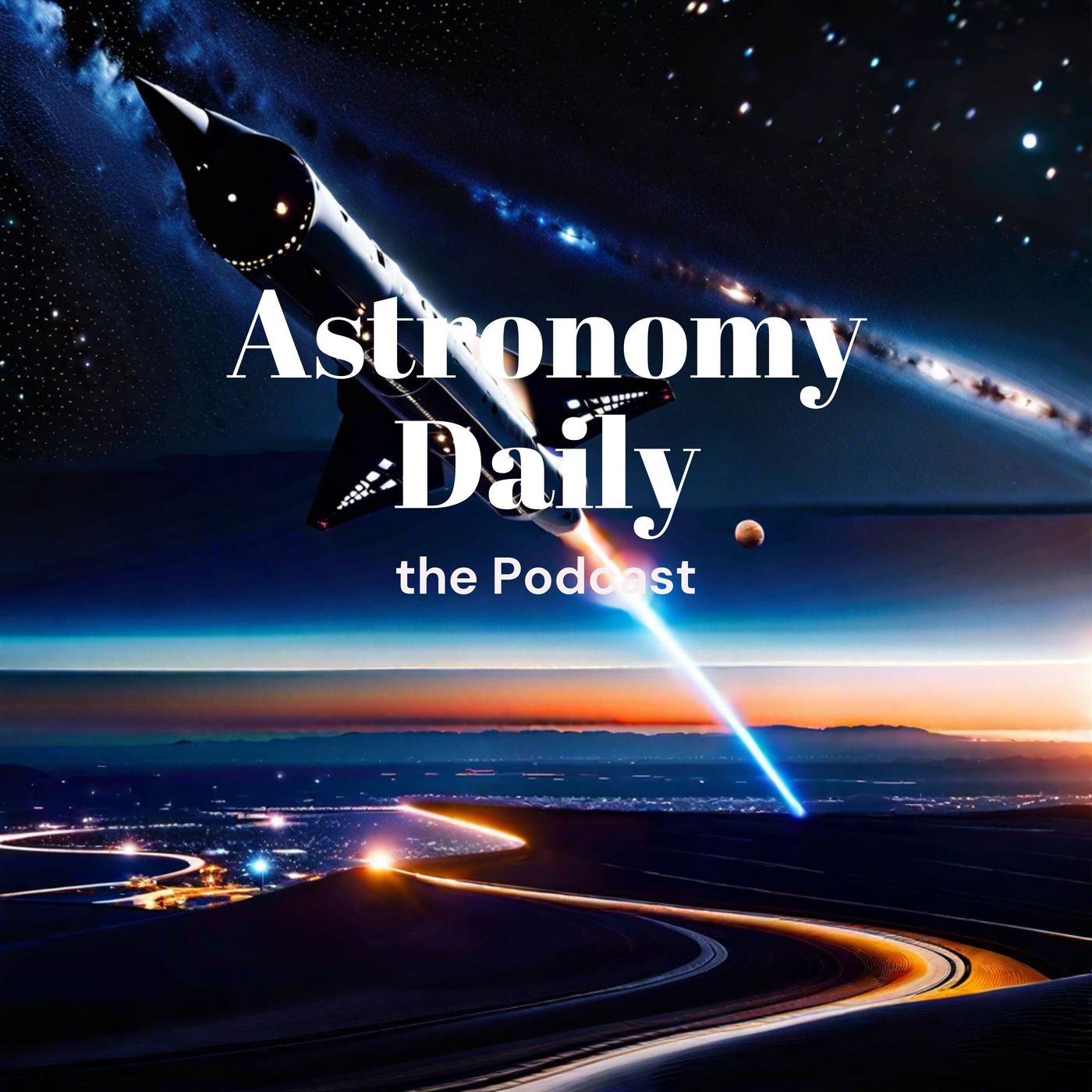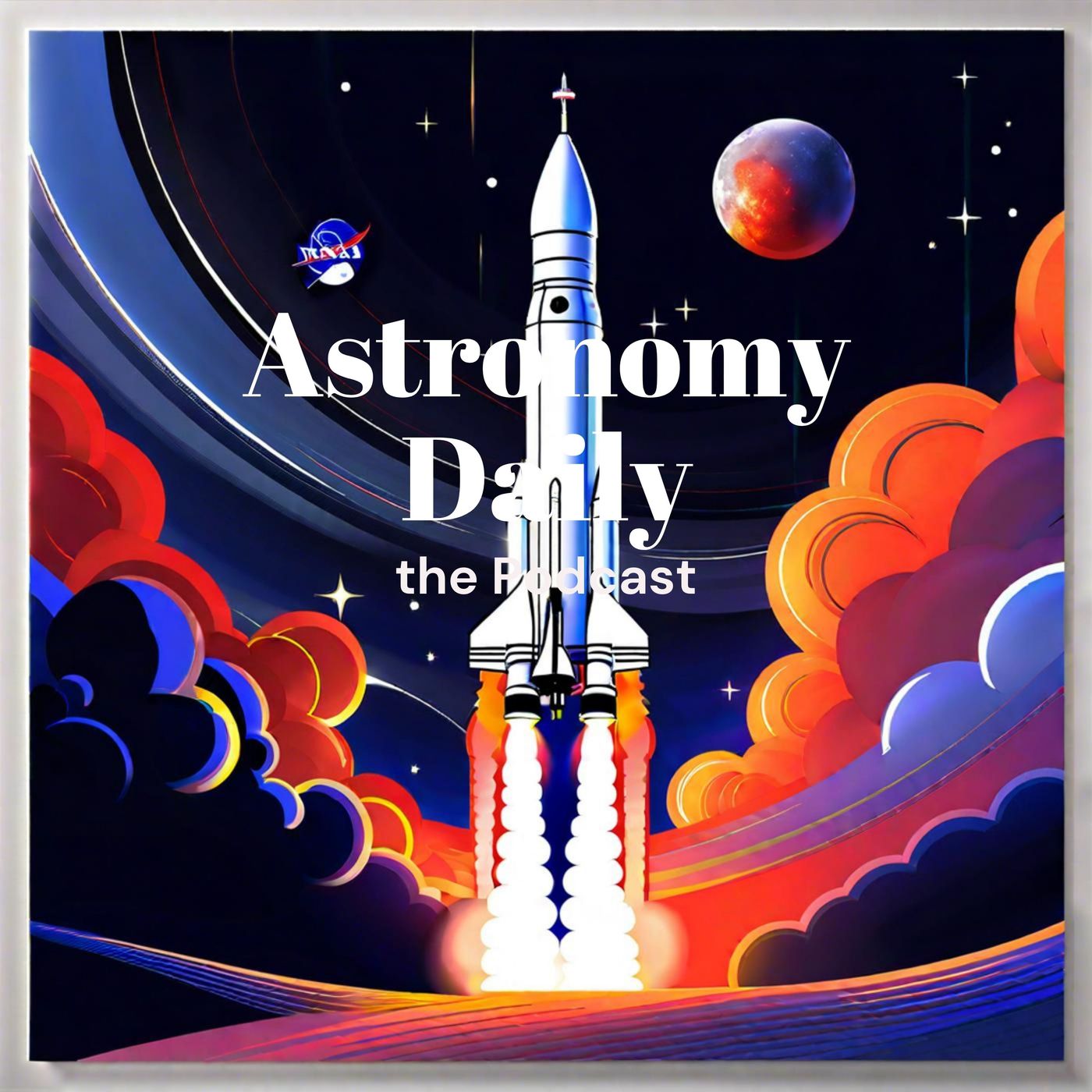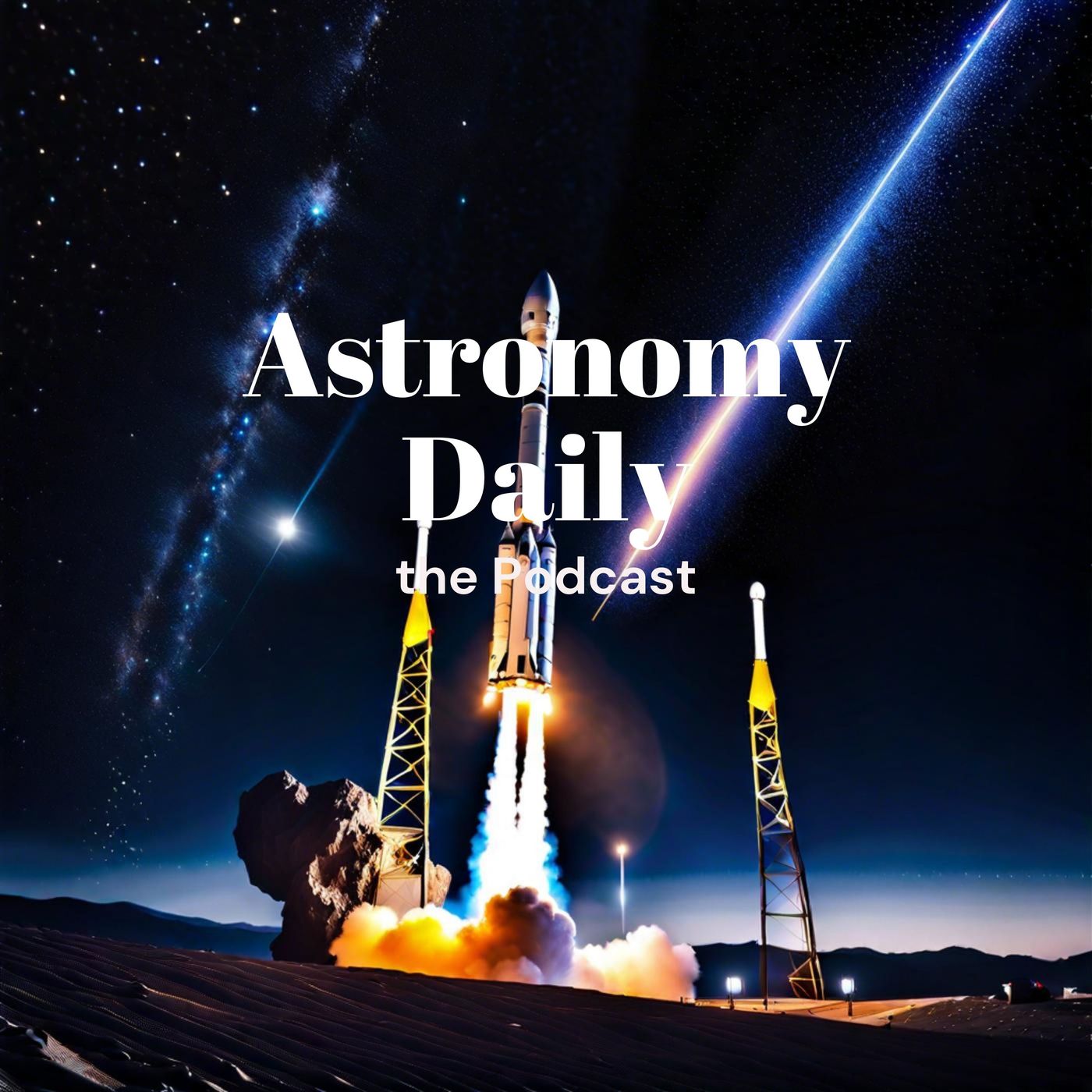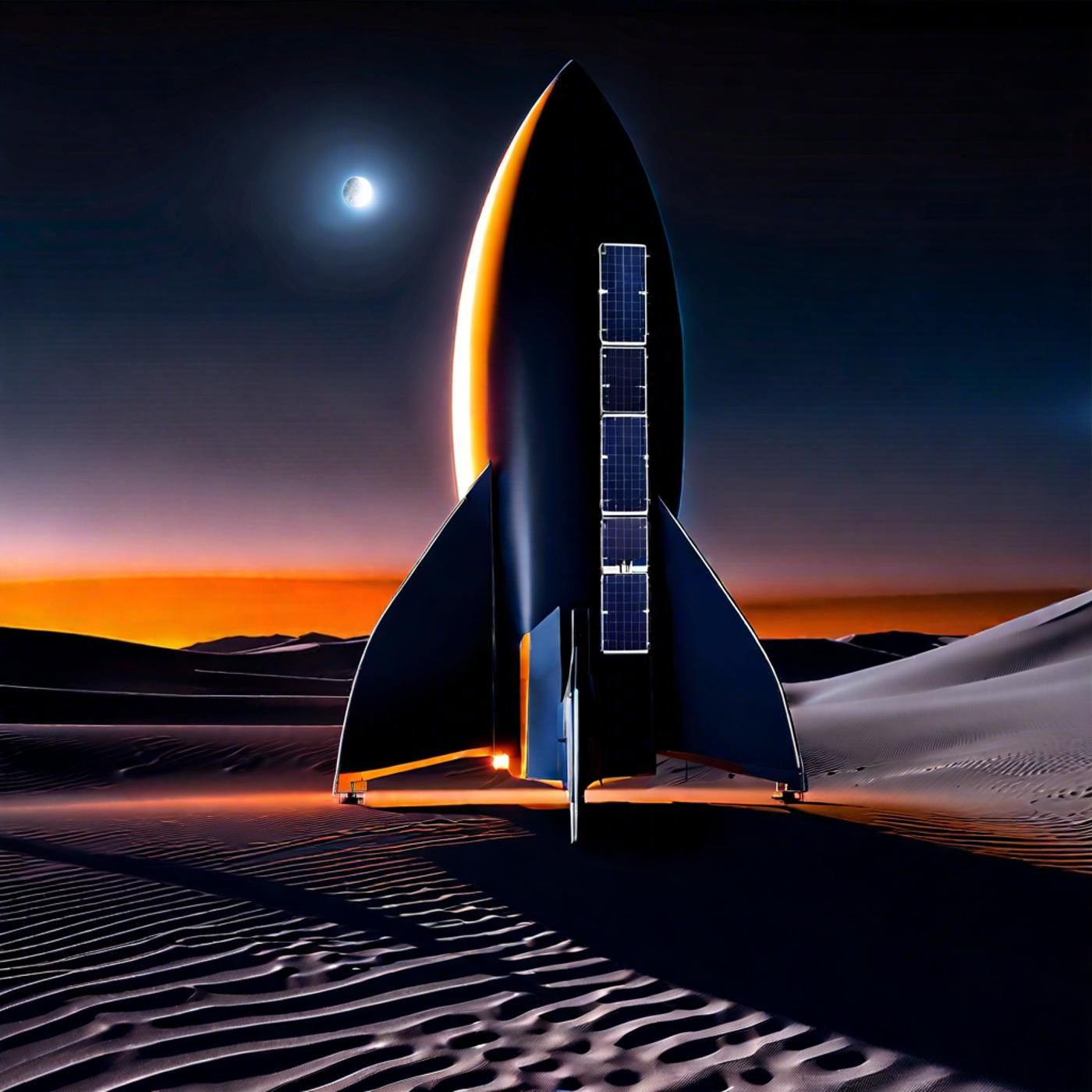S03E93: Firefly's CubeSat Triumph & Europe's Ariane Six Countdown
Welcome to Astronomy Daily, your source for the latest space news. I'm your host, Anna. In today's episode, we have some exciting updates from the world of space exploration and technology.Firefly Aerospace has achieved a groundbreaking milestone with...
Welcome to Astronomy Daily, your source for the latest space news. I'm your host, Anna. In today's episode, we have some exciting updates from the world of space exploration and technology.Firefly Aerospace has achieved a groundbreaking milestone with the successful launch of eight CubeSat satellites. Europe is preparing for a monumental event with the upcoming launch of the Ariane Six rocket. We'll also delve into some innovative technology being tested in space by Berkeley researchers, specifically a next-generation 3D printer that could revolutionize long-duration space missions. Sit back, relax, and let's dive into the cosmos.
Don't forget to visit our website at astronomydaily.io for more episodes and the latest news. Follow us on Facebook, X, and TikTok for more updates. Until next time, keep looking up.
astronomydaily.io
bitesz.com
Become a supporter of this podcast: Support Astronomy Daily.
For all the latest Space News from our continuosly updating newfeed: Newsfeed
Support our sponsor NordVPN and be surprised by their very special offer - bitesz.com/nordvpn
Astronomy Daily brings you the latest space news and developments
Anna: Welcome listeners, to Astronomy Daily, your source for the latest space news. I'm your host, Anna. In today's episode, we have some exciting updates from the world of space exploration and technology. Firefly Aerospace has achieved a groundbreaking milestone with the successful launch of eight CubeSat satellites, and Europe is preparing for a monumental event with the upcoming launch of the Ariane Six rocket. Well also delve into some innovative technology being tested in space by Berkeley researchers, specifically a next generation 3d printer that could revolutionize long duration space missions. Sit back, relax, and let's dive into the cosmos.
Firefly Aerospace successfully launched its alpha rocket carrying eight Cubesat satellites
Firefly Aerospace has achieved a major milestone with the successful launch of its alpha rocket carrying eight Cubesat satellites into space. This significant event took place at California's Vandenberg Space Force base and marks another step forward in space exploration. The mission, aptly named Noise of Summer, was conducted under NASA's Launch Services program venture. This program aims to provide affordable access to space for satellite developers at, uH, us universities and nonprofits, thereby advancing scientific research and enabling new technology demonstrations in space. Previously, this launch faced a delay due to ground systems issues, but the team at Firefly Aerospace worked relentlessly to solve the problem, ensuring the successful liftoff at the next launch window. Bill Weber, CEO of Firefly Aerospace, expressed his pride in the team's rapid progress with the Alfa rocket, emphasizing the importance of delivering a reliable and repeatable launch vehicle to meet market demand. The noise of summer mission is especially significant for its support of various student led Cubesat initiatives. Not only does it showcase the reliability of Firefly's alpha rockets, but it also underscores the company's commitment to democratizing space access. In Webers words, this mission is a testament to making space more accessible for everyone. One dependable rocket launch at a time. So a big congratulations to the Firefly team for their successful mission and the promising advancements it brings to the space industry.
The Ariane six rocket is set to launch on July 9, 2024
Europe is gearing up for a monumental moment as the Ariani Six rocket is set to launch on July 9, 2024, from French Guiana. This launch represents a significant leap forward, ensuring Europe's autonomous access to space. What does that mean for us? Well, it opens up endless possibilities in scientific research, earth observation, technology development, and even commercial ventures. The Ariane six rocket is designed to carry more payloads further and more efficiently than its predecessors. It's packed with new features that make it a critical component of Europe's space ambitions. This mission isn't just about adding another rocket to the lineup. It's about showcasing Europe's capability in space transportation, making it a key player on the global stage for those eager to witness this groundbreaking event, you can watch the entire launch live on esaweb TV. The broadcast will begin half an hour before liftoff, giving you a front row seat to all the action. Youll be treated to expert commentary that provides deeper insights into the rockets design, its mission, and the people behind its creation. Commentary will be available in multiple languages, including English, French and German, ensuring that viewers from around the world can engage with this landmark event. The launch will unfold in three exciting phases. In the first phase, the main stage engine, Volcan 2.1, will combine forces with two powerful boosters to propel the Ariane six off the ground and into space. The separation of the main stage from the upper stage will be a particularly thrilling moment, followed by the first boost of the upper stages Vinci engine, placing the rocket into an elliptical orbit. During the second phase, the Vinci engine will reignite, demonstrating its capability to change orbits while in space, a crucial feature for future missions requiring precise maneuvering. This phase will also see the deployment of the first batch of satellites, a spectacle in its own right. The final phase pushes the upper stage's capabilities even further, testing its ability to reignite after an extended period in microgravity. This phase will include the controlled deorbiting of the upper stage, ensuring it doesn't become space debris, and culminate in the safe return of reentry capsules aimed at surviving the journey back through Earth's atmosphere. This launch is a testament to years of hard work and dedication by a team committed to pushing the boundaries of what's possible in space exploration. For those interested in the finer details, insights from key developers and interviews will be part of the livestream painting a fuller picture of this m ambitious project. So mark your calendars for July 9 and tune into esaweb TV to watch history in the making. This is not just a launch, it's a demonstration of Europe's growing prowess in space technology and a glimpse into a future filled with limitless possibilities.
3D Printer In Space
Berkeley researchers have made a significant leap towards revolutionizing space missions by successfully testing their next generation 3d printer, known as SpaceCAL in microgravity. This groundbreaking technology was put to the test during a Virgin galactic mission, and it didn't disappoint. Just picture this scenario. A crew of astronauts is on a mission to Mars, a daunting 140 million mile away from Earth, when suddenly a critical part of their spacecraft breaks. In the past, such an incident would rely on pre packed spare parts, which take up valuable space and weight. But now, thanks to SpaceCAL they could simply print the necessary parts right then and there. Developed by a team of Berkeley researchers led by PhD student Taylor Waddell, the SpaceCAL 3d printer impressively demonstrated its capabilities aboard the Virgin Galactic VSS unity space plane. It spent 140 seconds in suborbital space, during which it autonomously printed and post processed four test parts, including intricate space shuttles and benchy figurines, from a liquid plastic called Pegda. This was no small feat. SpaceCAL had already proven itself under microgravity conditions during previous parabolic flights, but this mission validated its readiness for real space travel. Waddell expressed optimism that the technology could one day manufacture a wide range of items required for space missions, from spacecraft components to tools and even custom medical supplies like contact lenses and dental crowns for astronauts. The innovation stems from computed axial lithography cl, a, uh type of additive manufacturing invented by UC Berkeley and Lawrence Livermore National Laboratory LNL researchers in 2017. This method uses light to form solid objects from a viscous liquid and offers incredible speed and efficiency, crafting parts in as little as 20 seconds. Cal's ability to perform in microgravity makes it ideal for space applications, enabling astronauts to produce necessary items on demand and significantly reducing mission upmass and risk. The team behind this technology sees its potential not just in emergency repairs, but also in biomedical applications that could be critical for long duration space missions. For instance, they envision using CAL to create customized dental replacements, skin grafts, or even surgical tools, a UH capability that could drastically improve astronaut health and safety during extended missions. Hayden Taylor, the associate professor who leads the nanoscale manufacturing lab at Berkeley, has provided invaluable support to his students, allowing them to pursue innovative research in this field. Waddell and his team are now working on further projects, including validating Cal technology on the International Space Station and perhaps one day even printing human organs in space. This collaborative project illustrates what can be achieved when curious minds and supportive mentors come together. It also highlights the critical role that companies like Virgin Galactic and institutions like UC Berkeley play in pushing the boundaries of technology for the betterment of both space exploration and life on Earth. The next frontier for Waddell and his team involves working with NASA to develop objects that can support crew health and wellness in space. The ultimate goal is to bring the benefits of these space borne innovations back to Earth, offering new technologies that could improve lives across the globe.
That's it for today's episode of Astronomy Daily
That's it for today's episode of Astronomy Daily. Thanks for joining me, Anna, on this journey through the latest space news. Don't forget to visit our website at astronomydaily.io for more episodes and the latest news, follow us on Facebook, X and TikTok for more updates. Until next time, keep looking up
New to Astronomy Daily - The Podcast?
Here are some great episodes to start with.



















